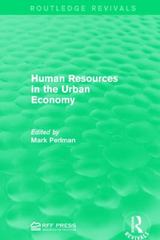A monopolist seller faces two buyerA and B. Each buyer has his own incremental reservation price for l, 2, 3, or 4 units of Widgets as shown on the table below. Quantity First Unit Second Unit Third Unit Fourth unit A's Reservation price 7 5 3 1 B's reservation price 14 10 6 2 So for example, the A buyer has a total reservation price of 15 for 3 units of Widgets. 1) Suppose the seller cannot separate the buyers, and must charge the same per unit price to both of them. (Perhaps the seller cannot tell them apart) What price maximizes the sellers revenue? To answer this first fill in the table below. You may restrict attention to the prices in the table ( price range 2 8) and state how many units of widgets each buyer would demand for each of these prices. Price 2 3 4 5 6 7 8 A's Demand 8' Demand Second calculate the revenue the seller would earn at each of those prices, and determine the best price. 2) Now suppose the seller can distinguish the A buyer from the B buyer, and furthermore can charge them different prices. ( Perhaps the widgets are protected by import/export regulations, so the buyers in different countries are forced to pay their local prices) What two prices should the seller set to the two buyers to maximize revenue? Forthis problem consider and price in the range of( 114) l} yer A: Consider the inverse demand curve is p = a + b q, where p is price, q is demand, a is intercept and b is slope. We need to find the intercept and slope. To get the slope, we may consider any two pairs of price and quantity. For example, when quantity increases from 1 to 2, price (reservation price) falls from 7 to 5. Hence, the slope of the inverse demand curve of buyer A 2 (change in price)/(change in demand) 2 (57) (2-1) : -2. Now using the slope in the above equation for the first pair of price and quantity, we get 7 = a + (2)*1 => a 2 7+2 = 9. Hence, the equation of the inverse demand curve for buyer A is p = 9-2q yer B: Similarly, consider the equation for buyer b as p : c + d q. Taking first 2 pairs of price and quantity for buyer B, the slope can be calculated as (change in price)/change in quantity) 2 (1014)/(21) = 4. Again, by using the slope of (-4) for the first pair of price and quantity for buyer B, we get 14 = c + (-4)*1 => a = 14+4=18. Hence, the equation for inverse demand curve for buyer B is p = 18-4q. Answer to Question 2: Consider that the monopolist can distinguish between demand of the two buyers. The table below provides the details of demand of buyer A and B for a price range of 1 to 14. Price 2 3 4 5 A's demand 6 7 4 8 3.5 3 9 10 2.5 2 11 1.5 12 13 1 14 B's demand 4.25 0.5 0 4 3.75 -0.5 -1 3.5 3.25 -1.5 -2 Revenue from A 3 2.75 -2.5 4 2.5 7 2.25 9 2 10 1.75 1.5 1.25 Revenue from B 10 1 9 4.25 8 7 4 0 11.25 -5 14 16.25 -11 18 18 Total Revenue 19.25 20 -26 .35 20.25 20 19.25 30.25 18 16.25 14 As we may observe that the revenue from buyer A is highest when the monopolist charges a price of 5 to buyer A at which buyer A buys 2 units. Similarly, the revenue from buyer B is highest at a price of 9 where buyer B buys 2.25 units from the monopolist. Hence, the total revenue = 10+20.25 = 30.25 In the previous case, the monopolist was able to generate a revenue of 30 by selling 15 units at a price of 2, where as in the later case, the monopolist is able to charge different prices of 5 and 9 to buyer A and B respectively, by selling just 2 and 2.25 (a total of 4.25) units









